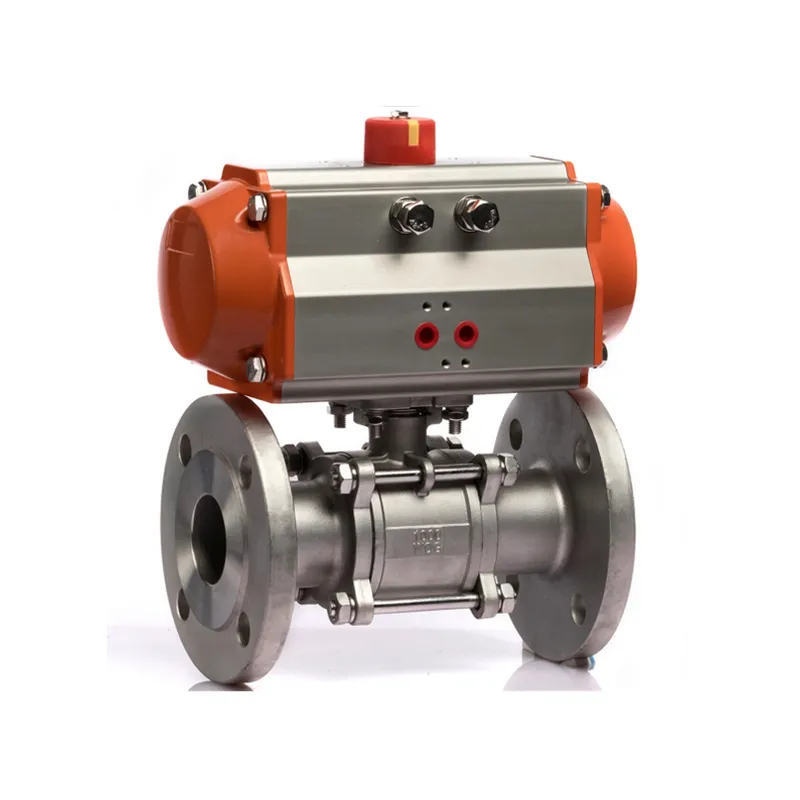The Service Life of Flange Ball Valves
2025-07-03
Flange ball valves are essential components in fluid control systems across various industries, including oil and gas, water treatment, and chemical processing. Known for their reliability, durability, and ease of operation, these valves help regulate the flow of liquids or gases in pipelines. One of the most critical aspects of their performance is their service life, which depends on multiple factors such as material quality, operational conditions, and maintenance practices.
1. Factors Influencing Service Life
The service life of a flange ball valve is influenced by several key factors:
Material Quality: The materials used in manufacturing the valve are the foundation of its longevity. Flange ball valves are typically made from stainless steel, carbon steel, brass, or alloy materials, each offering varying levels of resistance to corrosion, pressure, and temperature extremes. Stainless steel valves, for example, are highly resistant to corrosion, making them ideal for harsh environments. The choice of material directly impacts the valve’s durability and resistance to wear.
Pressure and Temperature Conditions: Ball valves operate under varying pressures and temperatures, and these conditions play a significant role in determining how long the valve will last. Exceeding the pressure and temperature limits can cause valve degradation or failure. High-pressure systems, in particular, can accelerate valve wear, leading to shorter service life. Similarly, extreme temperatures may result in thermal expansion or contraction, putting additional stress on the valve components.
Fluid Type and Quality: The type of fluid passing through the valve also affects its service life. Aggressive chemicals, slurries, and abrasive fluids can erode the valve's internal surfaces more quickly. Contaminants such as dirt or debris can accelerate wear and damage the sealing components. For instance, valves used in systems that handle corrosive substances, like acids or bases, may require special coatings or materials to ensure a longer service life.
Valve Design and Construction: The design of the flange ball valve also plays a crucial role in its longevity. Valves with high-quality seats, durable ball material, and well-engineered seals can offer a longer service life. Valves that are designed to handle specific conditions, such as high pressures or extreme temperatures, are typically more robust than standard designs.

2. Maintenance and Inspection
Regular maintenance and inspections are essential to ensure the longevity of a flange ball valve. Periodic checks can identify potential issues before they become serious problems. Some of the maintenance practices that can extend the service life of a valve include:
Lubrication: Proper lubrication of the valve’s moving parts, such as the stem and ball, can reduce friction and wear, ensuring smooth operation over time. Inadequate lubrication may lead to premature wear and valve failure.
Sealing and Gasket Replacement: The seals and gaskets in flange ball valves are critical to preventing leaks and maintaining pressure integrity. Over time, these components can degrade, especially in high-temperature or high-pressure applications. Regular replacement of seals and gaskets helps to maintain the valve's functionality and prevent failures.
Cleaning: Cleaning the valve to remove any debris or contaminants that may build up inside the system can help prevent damage to the valve components. This is particularly important when the valve is exposed to abrasive fluids or slurries that could cause the internal surfaces to wear prematurely.
Inspection for Corrosion or Wear: Routine inspections are vital to detecting early signs of corrosion or wear. If corrosion is observed, the valve may need to be replaced or repaired to prevent failure. Non-destructive testing methods, such as ultrasonic or magnetic particle testing, can help identify issues without disassembling the valve.
3. Expected Service Life
The expected service life of a flange ball valve can vary depending on the factors mentioned above. In general, with proper maintenance and under optimal conditions, a well-designed and high-quality flange ball valve can last anywhere from 10 to 20 years. However, in harsh operating environments, such as those with extreme pressure or corrosive fluids, the service life may be shorter, and the valve may require more frequent inspections and maintenance.
4. End-of-Life Considerations
Once a flange ball valve reaches the end of its service life, it may exhibit signs such as leakage, difficulty in operation, or corrosion. It is essential to replace the valve promptly to maintain the integrity of the system and prevent further damage. A timely replacement can also ensure the safety of personnel and equipment, as a malfunctioning valve may lead to hazardous situations, including leaks, bursts, or system failures.
Conclusion
In summary, the service life of a flange ball valve is determined by a combination of factors such as material selection, operational conditions, fluid types, and maintenance practices. By ensuring proper installation, regular inspection, and timely maintenance, operators can maximize the valve's lifespan and optimize system performance. Additionally, understanding the specific conditions in which a valve operates is critical to selecting the right materials and designs, ensuring that the flange ball valve can endure the stresses of the application and provide reliable service for many years.
As a professional manufacturer and supplier, we provide high-quality products. If you are interested in our products or have any questions, please feel free to contact us.


